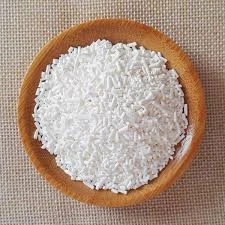
Exploring the Uses and Benefits of Monosodium Glutamate in Cooking and Food Preservation
The Role and Impact of Monosodium Glutamate in Culinary Arts
Monosodium glutamate (MSG) is a flavor enhancer that has been a topic of discussion, debate, and intrigue since its discovery in the early 20th century. This compound, a sodium salt of glutamic acid, naturally occurs in various foods, including tomatoes, cheese, and mushrooms. It is most commonly associated with Asian cuisine but has found its way into a wide range of culinary applications across the globe. Understanding the implications of MSG on flavor enhancement and health can help us appreciate its place in modern cooking.
The Science Behind MSG
At the core of monosodium glutamate's appeal is its ability to elevate flavors, particularly the umami taste—a category often described as savory. This umami flavor is one of the five basic tastes, alongside sweet, sour, bitter, and salty. Discovered by Kikunae Ikeda in 1908 when he extracted it from kombu seaweed, MSG imparts a depth of flavor that can enhance both the natural tastes of ingredients and the overall dish. Chemically, monosodium glutamate works by stimulating the glutamate receptors on the tongue, which can intensify flavor perception and create a more satisfying experience for the palate.
Culinary Applications
In the culinary landscape, MSG serves a multitude of functions. Beyond mere flavor enhancement, it can be instrumental in balancing dishes. For instance, in broths and sauces, it can help unify the flavors, drawing them together in a harmonious manner. This makes MSG a staple ingredient in many commercial food products, such as canned soups, frozen dinners, and snacks, where the goal is to create consistently palatable flavors.
Additionally, MSG is particularly popular in Asian cooking, where it is often used in dishes like stir-fries, marinades, and seasoning blends. It can also be found in processed foods, such as chips and seasonings, appealing to consumers seeking a convenient way to enhance flavor in their homemade meals.
Health Perspectives
monosodium glutamate

Despite its widespread use, MSG has been surrounded by controversy, particularly regarding its safety and health effects. Some individuals report sensitivity to MSG, experiencing symptoms such as headaches, sweating, and feelings of nausea—a phenomenon known as Chinese Restaurant Syndrome. However, scientific studies have largely debunked the myth that MSG poses any significant health risks for the general population when consumed in normal amounts.
Organizations such as the Food and Drug Administration (FDA), the World Health Organization (WHO), and the European Food Safety Authority (EFSA) have classified MSG as safe for consumption. They emphasize that, as with any ingredient, moderation is key. The potential sensitivity varies from person to person, and while some might experience adverse effects, the majority can enjoy foods containing MSG without concern.
Cultural Perception
Culturally, MSG has sparked varying perceptions and attitudes. In some societies, notably in parts of Asia, it is embraced as a culinary essential due to its flavor-enhancing properties. Conversely, in other regions, especially in Western countries, it has faced a stigma, often associated with artificiality and processed foods. This perception has led to a trend towards “clean eating,” where consumers gravitate toward natural ingredients, sometimes at the expense of flavor consistency.
Despite its contentious reputation, a growing movement celebrates MSG for its culinary benefits. Chefs and food enthusiasts are increasingly recognizing the ways in which MSG can elevate dishes without compromising nutritional integrity. As the dialogue surrounding food and taste evolves, many are advocating for a more nuanced understanding of flavor enhancement, where ingredients like MSG can coexist alongside fresh and natural products.
Conclusion
Monosodium glutamate remains a pivotal ingredient in the culinary world, wielding the power to enhance flavors and transform meals. While the debates surrounding its health implications continue, the fact remains that MSG has a rightful place in the pantry of any cook committed to exploring the depths of flavor. Embracing MSG as a tool, rather than vilifying it, allows for a fuller appreciation of the intricate science of taste and the joys of cooking. As we forge ahead in our culinary pursuits, understanding and responsibly utilizing monosodium glutamate can lead to richer, more satisfying dining experiences.
-
Comprehensive Guide to Acetic Acid as Preservative: Benefits, Uses & Future TrendsNewsNov.24,2025
-
What Is a Food Additive? Global Insights, Applications & Future TrendsNewsNov.24,2025
-
968 Sweetener: The Modern Solution for Health-Conscious SweeteningNewsNov.23,2025
-
Discover the Benefits and Uses of 965 Sweetener (Erythritol) | Tenger ChemicalNewsNov.23,2025
-
961 Sweetener - A Next-Gen Sugar Alternative for Health and IndustryNewsNov.23,2025
-
Understanding 960 Sweetener: The Modern Sugar Alternative for Health and IndustryNewsNov.22,2025
-
Everything You Need to Know About 955 950 Sweeteners – Benefits, Uses, and TrendsNewsNov.22,2025
Hebei Tenger Chemical Technology Co., Ltd. focuses on the chemical industry and is committed to the export service of chemical raw materials.
-

view more DiethanolisopropanolamineIn the ever-growing field of chemical solutions, diethanolisopropanolamine (DEIPA) stands out as a versatile and important compound. Due to its unique chemical structure and properties, DEIPA is of interest to various industries including construction, personal care, and agriculture. -

view more TriisopropanolamineTriisopropanolamine (TIPA) alkanol amine substance, is a kind of alcohol amine compound with amino and alcohol hydroxyl, and because of its molecules contains both amino and hydroxyl. -

view more Tetramethyl Thiuram DisulfideTetramethyl thiuram disulfide, also known as TMTD, is a white to light-yellow powder with a distinct sulfur-like odor. It is soluble in organic solvents such as benzene, acetone, and ethyl acetate, making it highly versatile for use in different formulations. TMTD is known for its excellent vulcanization acceleration properties, which makes it a key ingredient in the production of rubber products. Additionally, it acts as an effective fungicide and bactericide, making it valuable in agricultural applications. Its high purity and stability ensure consistent performance, making it a preferred choice for manufacturers across various industries.





